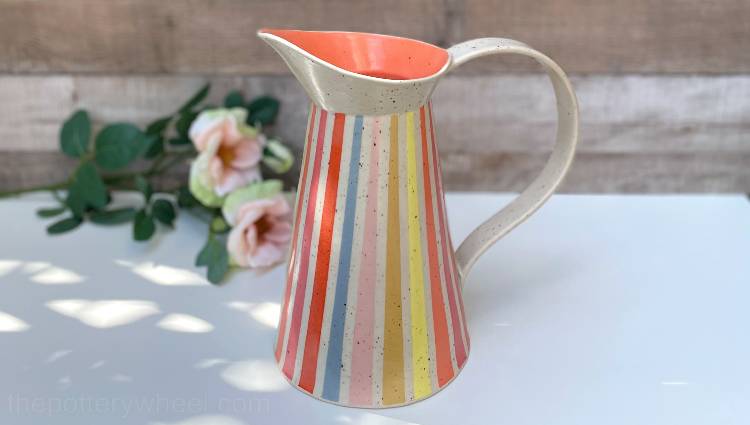Your cart is currently empty!
Does Clay Shrink When Fired?
Published:
Last Updated:
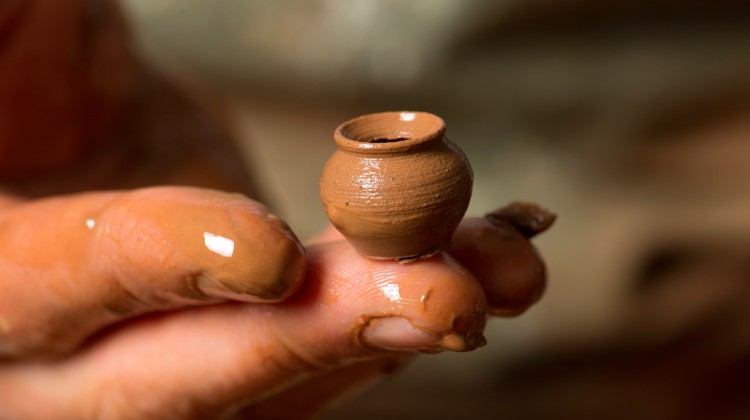
Affiliate Disclaimer
As an affiliate, we may earn a commission from qualifying purchases. We get commissions for purchases made through links on this website from Amazon and other third parties.
If you are new to pottery and you have just had your first pieces of pottery fired, you may have noticed that they are quite a bit smaller when they come out of the kiln than when they went in. You may have found yourself wondering why does clay shrink when fired.
For several reasons, clay does shrink when fired. Firstly, it loses water. Secondly, it undergoes chemical and physical changes that leave it denser than it was in its original state. The more densely packed the particles of clay, the smaller the pottery will become.
Clay Shrinks When It’s Fired
The process of the clay losing volume when it is fired is sometimes called ‘fired shrinkage’ or ‘firing shrinkage’. There are a few reasons why the clay shrinks. Let’s look at some of the factors involved:
Water loss during firing causes clay to shrink…
On average, clay consists of 20 % water and 9 % organic matter. As a result, a fired piece can way almost 30% less than its original weight.
Even though clay goes into the kiln feeling bone-dry, it still contains some water. This water is a combination of residual moisture and chemically bonded water.
Residual moisture is water that sits between the clay particles and that has not evaporated yet. Chemically bonded water is water that is actually inside the clay particles.
As the clay is fired, the residual moisture evaporates and the chemically bonded water is driven out of the clay. The clay shrinks as a result of this drying-out process.
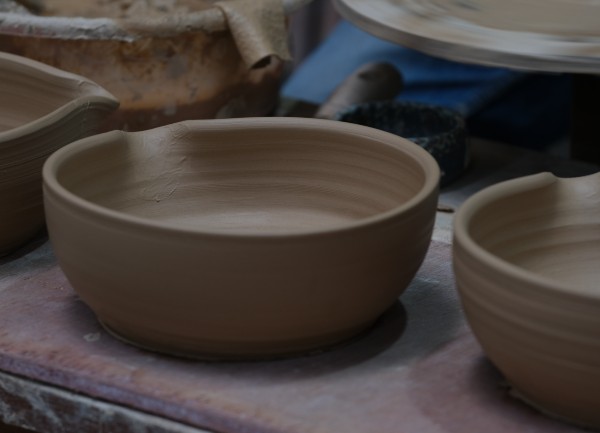
Chemical and physical changes also cause clay to shrink…
Also, during the firing process, organic matter is burnt off from the clay, so the clay loses some of its volume through that process.
In addition to this, clay undergoes a process of vitrification. Simply put, vitrification involves the formation of glass within the clay body whilst it is being heated in the kiln. As the clay heats up, glass begins to form within the clay body.
When a piece of greenware is fired, glass starts to form in the clay particles. This liquid glass gradually moves from inside the particles, into the spaces between the particles.
As a result, the clay shrinks, because the particles are getting smaller and the spaces between the particles are being filled up.
The hotter the firing temperature, the more the clay becomes vitrified. Vitrification is a process, so clay that is fired at a lower temperature may only be partially vitrified.
This means that some spaces remain between clay particles and the clay will be semi-porous. It also means that the clay will have shrunk less than a piece of clay that is fully vitrified.
The higher the firing temperature, the more the clay will shrink, until it has reached a point of maximum shrinkage.
If a piece of clay reaches the point at which it has shrunk as much as it can, but the temperature in the kiln continues to go up, the clay will start to bloat up and increase in size again.
Once the clay has started to bloat it begins to lose some of the hardness and strength that it gained as it shrunk.
Does Clay Shrink When It Dries?
Clay also shrinks when it dries out before being fired. The main reason for this is to do with the clay body losing water as it interacts with the air around it.
As soon as a piece of clay is taken out of its plastic packaging and comes into contact with air, it starts to lose water content. If the clay is left uncovered it will lose water until its moisture level is the same as the air around it.
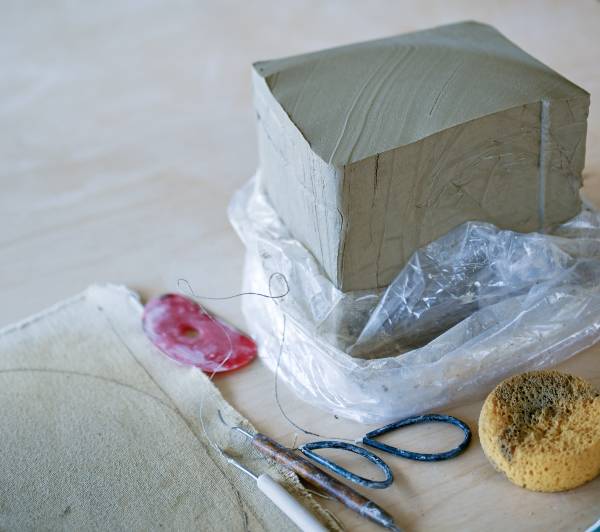
Clays with finer particles contain more water. This is because, if a piece of clay has more particles, there is also more surface area on those particles for the water to stick to. There is also more water between the particles binding the clay together.
Plasticity and the rate that clay shrinks…
Some clays are described as ‘plastic’, and others are described as ‘non-plastic’. Plastic clay is not ‘plastic’ in the normal sense of the word. In pottery, plasticity means that once the clay has been molded into a shape, it keeps that shape rather than slumping or returning to its original shape.
Clays that are more plastic shrink more when they are being fired for the following reasons:
- Organisms that grow in the clay can make it more elastic. These burn off when they are fired.
- Clay with finer particles is more elastic because there is more particle surface area and more water between the particles holding the clay together. Plastic clay shrinks more than non-plastic clay because it has more water content. This water is driven out when it dries and is fired.
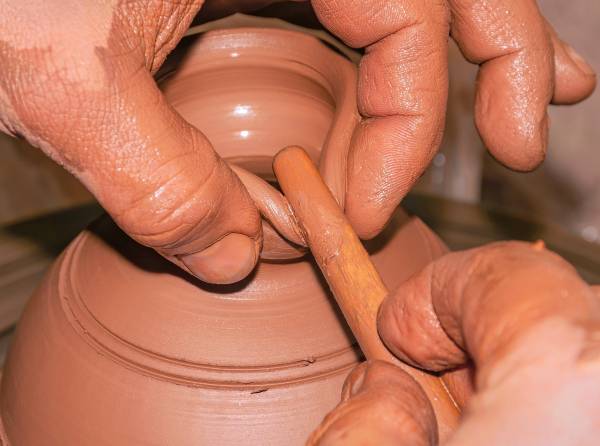
An example of clay that is very plastic and that shrinks a lot as it dries out and is fired is ‘ball clay’. Ball clays are fine-grained, very plastic sedimentary clays, which are almost white when fired.
Some clays are plastic because the flat surface of the clay particles has the opposite charge to the edge of the same particle. This conductivity makes them attract water.
The water sticks the particles together, and also lubricates them, which accounts in part for the mouldable qualities of plastic clay. It also accounts for their high water content and the shrinking that goes on when they dry.
Do different clays shrink at different rates?
Clay does shrink when fired, however, different clay bodies shrink at different rates. This can range between a shrinkage rate of 4-15% depending on the properties of the clay and how it is fired.
For example, earthenware pots tend to shrink between 6-8% when fired to cone 06. By contrast, stoneware will shrink about 11-13% when fired between cone 6 and cone 9. On the other hand, porcelain has a shrinkage rate of 14-15% when it is fired to cone 9.
Different types of clay and their shrink rate when fired:
| Clay Type | Cone | Temp in F | Temp in C | Shrinkage |
|---|---|---|---|---|
| Earthenware Stoneware Porcelain | 06 6-9 9 | 1,828F 2,232-2,300F 2,300F | 998C 1,222-1,260C 1,260C | 6-8% 11-13% 14-15% |
The more vitrified clay becomes the more it shrinks when it’s fired. Let’s take a look at the role of vitrification now…
Why does vitrification cause clay to shrink when fired?
Vitrification is also known as the ‘glass phase’ in the firing process. Clay has two ingredients which melt and form glass when the clay is heated. These ingredients are normally silica and alumina.
Another substance in clay is called flux. Flux is a substance that lowers the melting point of silica and alumina. At a certain temperature, the flux and the silica interact, and glass is formed.
As the piece gets hotter silica is drawn into the flux and glass is formed. During this process, the clay particles become smaller and more compact and the spaces between the clay fill up with molten glass.
The result of this is that there is a link between how much the clay shrinks and how absorbent it is.
If a piece of clay shrinks more, then it will be less porous and therefore less absorbent. You can see that in the table above. Porcelain clay is very dense and non-porous and it shrinks much more than earthenware which is still quite porous once it’s been fired.
Because the spaces between the clay particles fill with glass, vitrified clay is less porous than non-vitrified clay. The less porous a piece of clay, the less absorbent of water it will be once it has been fired.
Porcelain is non-absorbent, and it typically shrinks between 14-15% when it is fired. By contrast, earthenware, like the plant pots in your garden, is quite porous and only has a shrinkage rate of 6-8%.
It’s worth noting that different batches of the same type of clay can shrink at different rates when fired. This is because clay is an organic compound, even the same clay body will contain some natural variations in its composition.

Clay Shrinkage During Bisque Fire
Clay normally shrinks more during a glaze fire than a bisque fire. Nevertheless, it does shrink during the bisque fire.
Exactly how much it shrinks during a bisque fire depends on the type of clay being used. However, here are some of the reasons it shrinks during the first firing…
1) Water evaporation causes clay to shrink
As the kiln begins to heat up, any moisture trapped between the clay particles will begin to evaporate. Residual moisture will have evaporated once the temperature has reached 212F (100C) i.e. the boiling point of water. This evaporation is accompanied by a very small amount of shrinkage in the clay.
Later in the firing, water that is chemically bonded to the clay is also driven off. This means that by the time the bisque fire is complete, there is no water left in the ceramic material.
2) ‘Burn off’ causes clay to shrink
The next stage is called burn off and it is when the organic and inorganic matter in the clay is burnt off. This happens between 572 and 1470F (300-800C).
During this stage, materials such as carbon and sulfates are removed from the clay. At the end of this stage, any change in the clay’s size is so small it doesn’t make a difference to the naked eye.
Interestingly, at around 1064F, (573C) silica in the clay (otherwise called quartz) changes its structure. This causes a temporary increase in the size of the pottery. The expansion is only between 1 and 2%, and it will contract again once the clay is cooled.
This change in size is called the ‘quartz inversion‘. Although this expansion is small, it’s the reason why bisque ware can crack at this point in the firing schedule. Cracks are more likely to occur if the temperature increases too quickly and the clay does not have time to adjust.
3) ‘Sintering’ also causes clay to shrink
Sintering is the next stage in the bisque fire. When the clay becomes hot enough, the clay particles next to one another begin to stick together. This happens because as the clay becomes hotter the surface of the clay particles becomes more active and molecules in the particles pass between one another.
The particles are also able to move more freely and change position. Consequently, they move closer together and the clay becomes denser.
Because the clay particles are closer together and denser, the clay shrinks a little more.
Once the clay is sintered, it has become bisque ware and is ready for glazing. So, let’s take a look at the glazing process now…
Does Clay Shrink in a Glaze Fire?
Once the pottery is sintered, it is now ceramic rather than clay. Ceramics vitrify when they are glaze-fired. As described above, vitrification occurs as the temperature in the kiln increases.
During vitrification, some of the clay particles start to melt and form a glass substance that fills up the gaps between the remaining particles. The glass causes the particles to move closer together.
In addition to this, the clay particles themselves become smaller. This is because glass-forming materials leave the particles and fill up the spaces between each other. The clay particles lose volume during this process.
The ceramic material becomes even denser and less porous. Consequently, the clay shrinks during the glaze fire. The less porous ceramic becomes, the more it shrinks when it is fired.
For example, porcelain, which is non-porous after being fired shrinks much more than earthenware. By contrast to porcelain, earthenware will remain semi-porous underneath the glaze.
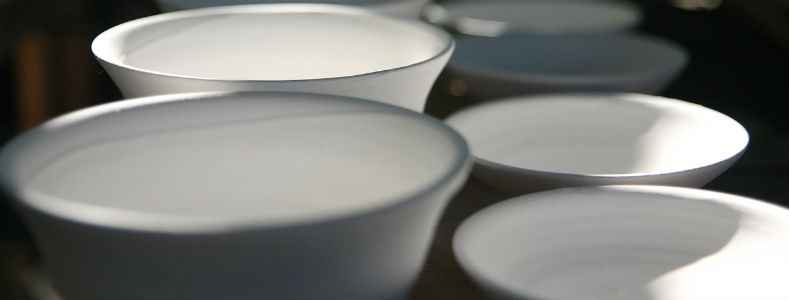
Clay Shrinkage During Cooling
Clay also shrinks when it’s fired during the cool-down process. This is because there are substances in the clay, that shrink on cooling. One of these substances is called Cristobalite.
Cristobalite is a crystalline form of silica. When Cristobalite cools, it contracts quite suddenly at around 392F (200C). The contraction is around 0.8% in volume.
Although the contraction is small in volume, it happens suddenly and can cause cooling cracks in the pottery. By the time the ceramic is cooling down, it is no longer plastic. Instead, at this point, the pottery is hard and brittle. Sudden contractions can cause the ceramic to fracture.
This is one of the reasons why it is important to let the ceramic cool down slowly once the fire has been completed.
Final Thoughts
To answer the question, does clay shrink when fired? The answer is, yes. It shrinks at every stage in the process, from the moment it is taken out of its plastic bag and you begin to work with the clay.
Broadly speaking the biggest points of shrinkage are during atmospheric drying, when the clay is changing from being leather hard to bone dry. The second dramatic change in volume is during the glaze fire.
However, different clay bodies respond differently to heat, and the exact percentage and timing of shrinkage will depend on the type of clay being used.

